Brady is 13 years old this year. Sometimes he has so much energy we have a hard time believing it, but we also see that he sleeps more and gets tired on longer walks. His diabetes makes him fragile and high-maintenance, yet he is strong, healthy, and happy right now. Our goal is to keep him that way for many more years. Here I will share what I’ve learned that may help you manage the twilight years of your furry best friend’s life.
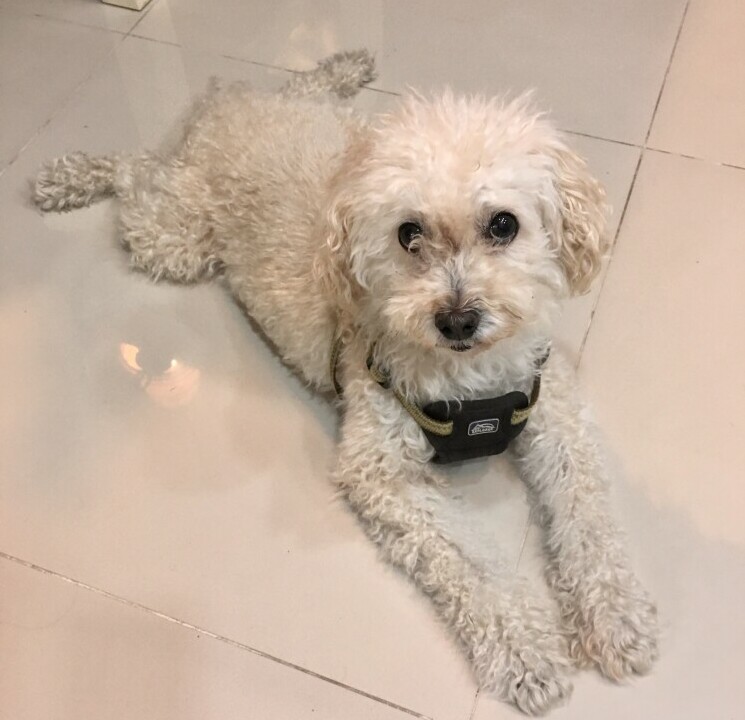
Signs of Aging in Dogs
First, it’s good to know the signs of aging in dogs. The signs are similar to the signs of aging in ourselves. Dogs begin to experience subtle shifts in mobility, such as having trouble climbing stairs or getting up after a long rest. One morning Brady started walking backward. We learned that is a symptom of severe back pain. That is how we discovered the steps in our two-story apartment were too much for Brady. We treated him with pain meds and massages, started carrying him up and down the steps, and added a glucosamine tablet to his morning meal every day. That was over a year ago. He has not walked backward since.
You may also notice shifts in their senses; changes in their hearing and eyesight that are not as sharp as they once were. We can tell that Brady does not see well. He sometimes loses track of us when we are out for a walk and needs us to call him to find us again. We also notice that he is not as responsive to our voices. Todd says he’s “stopped listening”, but I suspect he is just not hearing as well as he used to.
Another sign of aging is changes in your dog’s sleep patterns. We notice that Brady sleeps more than he used to. He doesn’t want or need as much exercise as before. During the day he is content sleeping on his bed for a while, then he moves to sleep on the floor, then back to the bed again. A short walk every few hours to relieve himself and he’s happy. Sometimes he gets a wild hair and wants to play fetch with one of his toys for a few minutes, and he greets us with leaps in the air when we leave him for more than a few minutes. But those are short bursts of energy. Mostly he lays near one of us resting and watching.
Daily Routines for Aging Dogs
Once we realized Brady was feeling his age it was time to start adapting our daily routines to support his changing needs. As he slowed down, we started shorter, more frequent walks instead of long treks. We used to take Brady hiking with us for miles. These days, if we go for a long walk, we take a backpack with us and carry him when he gets tired. He still loves getting out and exploring but does it on shorter excursions with rests.
Regular vet visits are even more crucial at this point in his life for his preventive care. Having a good relationship with the local vet is genuinely helpful. We communicate through messaging apps when we have questions. Regular checks keep us ahead of any potential health issues that tend to crop up in older dogs, like arthritis or heart problems. Brady has a slight heart murmur that we are monitoring. We plan to take him to a veterinary heart specialist soon. This kind of care is more affordable in Thailand, so we will take advantage of the opportunity to give him the best care we can while we are here.
One of the most overlooked aspects of caring for a senior dog is their diet. Senior dogs have different nutritional requirements, and you’ll want to choose something that meets your dog’s unique needs. Higher fiber, and lower-calorie food support weight management and digestive health, and adding supplements such as glucosamine can provide joint support. Brady’s health issues require that he eat prescription food. It is a low-fat, gastro-intestinal care food. We supplement with probiotics, flax seed, glucosamine, and silymarin.
Another way to support your dog’s health and longevity is to create a comfortable and supportive environment. That may require some adjustments around the house—a topic we’ll delve into in the following section.
Create a Comfortable, Easy Space for Senior Dogs
Just like humans, older dogs experience discomfort from arthritis or general joint wear and tear. This is why making certain alterations around your home can be a game-changer for their quality of life.
Let’s start with the basics: accessibility and ease of movement. Your older dog may not be as spry as they once were, so consider adding ramps or step aids to help them reach their favorite spots. We have not yet gotten ramps for Brady to get up and down off the couch, but we are seeing the need. He sometimes clearly wants up but doesn’t want to jump. Right now one of us carefully lifts him, but it’s time to get a ramp to make it easy for him to join us. Steep stairs? For us, the solution has been to carry him. Brady is 6kg (about 13 lbs) and easily fits in one arm. We realize this solution won’t work for everyone, but it is something you need to think about and plan for.
Next, think about where your dog rests. The hard floor that didn’t bother them in youth may now be unforgiving on their joints. An orthopedic dog bed with memory foam can provide much-needed relief. And it’s not just about the type of bed. Its placement matters too. Keep it away from drafts and in a quiet, familiar space where they can enjoy undisturbed rest. Brady loves his bed, however, we live in a warm climate, so he also enjoys the cool floor on his belly. We make sure he always has the choice.
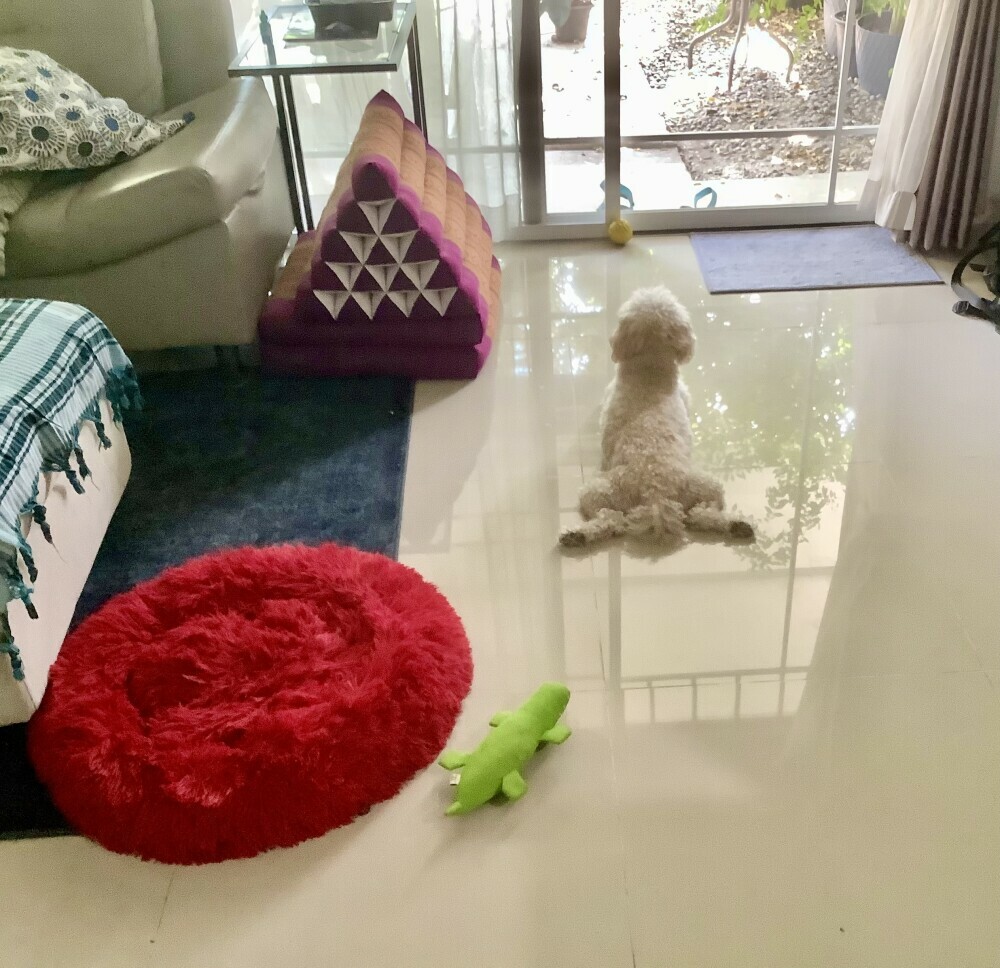
Climate control is another consideration. Older dogs – especially those with thin coats or underlying health issues – may struggle to regulate their temperature. Providing a cozy blanket or a heated bed in cold weather can make all the difference. Right now, we live in a hot climate so when we are outside with him, we give Brady a cool, shaded spot and plenty of fresh water to prevent overheating, and we never leave him outside when we are not home.
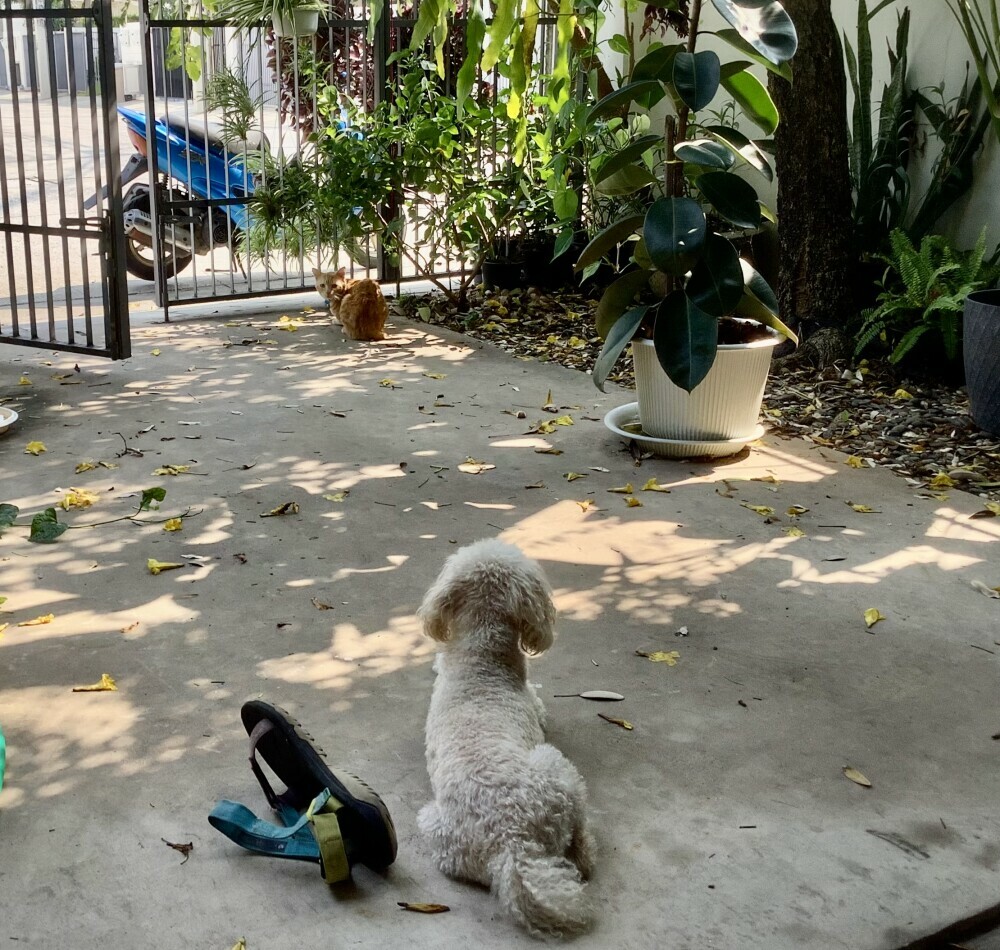
Keeping an eye on the neighbor’s cat.
You can’t forget the mental aspect, either. Senior dogs may not be able to play as hard, but they still crave entertainment and engagement. Low-impact activities, like sniffing games or gentle fetch, with a variety of toys stimulate their mind and foster a sense of purpose. Brady brings his toys out to greet us when we come home. He has a favorite fetch game that he asks for in the afternoons. Walks are a time for him to explore new smells. We let him take the lead about where to go and how long to stay out for his regular walks during the day.
Conclusion
By adapting our home and routines, we’re not just increasing Brady’s physical comfort; we’re nurturing his overall well-being. Providing this sense of security and happiness plays a vital role in giving our dogs their longest, healthiest lives.
Caring for an older dog is not just about physical support; it’s equally about ensuring they feel loved and comfortable. Celebrate every moment with your aging pet and cherish the life you have together creating wonderful memories.
We would love to hear from you. What triumphs and challenges have you faced in caring for your older dog? Please leave your comments or questions below.
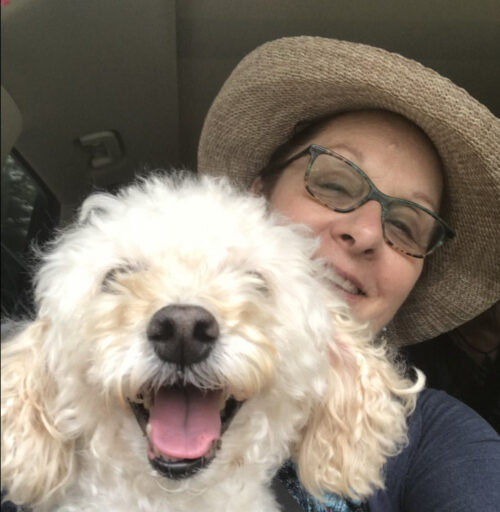
an
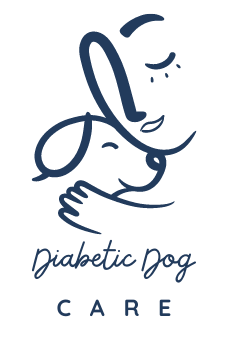

Lucy is seven and a Bernedoodle. I had three Bernese before Lucy and they all died at 7. As a doodle my hope is that the mix will give her a hardier constitution. This article makes me aware and alert to symptoms of aging. This series of articles is a service to all of us who love our furry companions.
Thanks Donna. I hope that Lucy lives a long healthy life.
Thank you for this insight into caring for a dog as they age. You have some very practical tips to help your dog still have a comfortable and stimulating life. You mention the supplements your dog takes. Do you think they have made a big difference and after how long did you notice an improvement? It is quite obvious that you very much care and love Brady, which is lovely to see.
Thanks for your kind words Lyn. We do love Brady very much. We have been giving him the supplements ever since we changed his diet. Therefore, I wouldn’t say that we see a difference, but when I research about dogs with diabetes, the life expectancy after diagnosis is 2 years. It has been more than 3 years since his diagnosis, so I think all the things we are doing are keeping him healthy. Our vet regularly comments on how strong he is, despite his chronic health issues. I think the supplements are an important part of our success with him.
What a lovely article! It brought tears to my eyes. I look after a street dog, and I can see the signs of aging in her, sleeping on the bed for a few hours a day. I think it is wonderful that you have adopted a daily routine for your dog. I hope that you have many more wonderful years together, thank you so much for writing this, you write from the heart, beautifully
Thank you for your kind words Catherine. Watching Brady slow down is hard. I just try to make the most of everyday we have together and make him as comfortable and happy as I can for as long as I can.